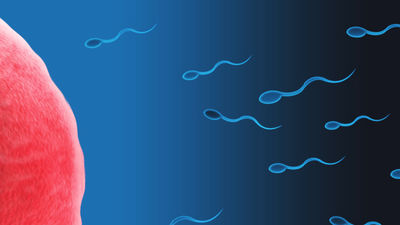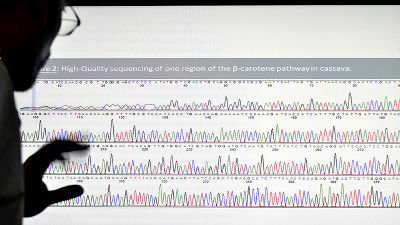Childhood stress such as abuse may be inherited at the genetic level, on the other hand, the light which can break it

BySydney Agee
The hardship memory such as abuse received as a child, may have a lifetime impact on that person. Although this can be said to be an influence which appears largely in the mental aspect, in fact, the stress also affects a part of genes, and that "memory" may be handed down to the next generation of the person himself / herself It is becoming clear by research.
Reduced levels of miRNAs 449 and 34 in sperm of mice and men exposed to early life stress | Translational Psychiatry
https://www.nature.com/articles/s41398-018-0146-2
How stress echoes down the generations - Genetics
https://www.economist.com/science-and-technology/2018/05/26/how-stress-echoes-down-the-generations
This research is undertaken by research teams such as Dr. Larry Faig of Tufts University in Massachusetts, USA. Teams are studies on rats and mice to investigate the influence of stress on genes, as it is difficult to conduct surveys that show individuals'
It is a known fact that traits of living things can be conveyed to the next generation by genes. However, at this time, living beings can respond to the situation by controlling the activity of genes at various stages in their lives. like thisEpigeneticDue to the existence of the phenomenon, it is revealed that even if it is an organism with the same genes, the characteristics of individuals change slightly due to various factors, and that change is handed down to the next generation.

Mr. Feig's research team initially conducted a questionnaire survey to 28 male volunteers to understand the degree of trauma experienced as a child. At the same time, we are also receiving subjects' sperm samples. Next, the research team investigated the mechanism of epigenetic phenomena related to "microRNA (miRNA)". The role of microRNA is to combine the information read from the gene into another molecule called "messenger RNA (mRNA), which serves to deliver the cell improvement that produces the required protein. MicroRNA inactivates messenger RNA, it reduces the activity of the gene in question and can move inside the sperm together with DNA.
Screening the male sperm collected by the research team confirmed that the concentrations of the two microRNAs "miR-34" and "miR-449" were 100 times lower in male samples with abused experience It was.
Based on this result, the research team progressed to the survey using the mouse. As a method of giving stress to the mouse, it is possible to repeat the act of repeatedly moving individuals to be stressed into a basket with different mice until the mouse reaches adulthood. When stressing mice with this method, it was confirmed that the levels of miR-34 and miR-449 were low in mouse sperm as well as in volunteer male.
After that, mating of these mice with unstressed female mice was conducted, and when the obtained embryos were examined, it was confirmed that the levels of the two microRNAs were similarly low, and furthermore, in this way It was confirmed that the levels of two microRNAs were similarly low in sperm of descendant mice born as well. In other words, it was confirmed that the generation of mice born of muscles growing under stress from childhood also confirmed that the effects of stress received by parents are transmitted at the genetic level to the generation mice.

According to the research team, the mice of child generation born in this way tended to be more anxious and less social. Moreover, it is said that the influence of stress is also applied to the mouse born in the next generation, and it is also confirmed that the influence received by a generation of a generation has been handed down to its grandchildren level That's it. Although the research team has not reached the stage to prove that this genetic cause is in miR-34 and miR-449, the findings suggest that the findings are suggestive of that .
In order to make the results of this research more reliable, Mr. Faig and others are planning a further extensive investigation. From now on, we will also conduct a questionnaire survey on the fathers of the subjects, and we are making a policy of closely watching whether epigenetic changes confirmed by the subjects were caused by experiences in early childhood or by fathers about. Also, plans are set for similar investigations for sisters and daughters.
This survey has become ambitious content to reveal the influence of the magnificent scale over several generations. Once its content is established, it is possible to prevent the effect of stress present in the parent's generation, for example, from being taken over to the next generation by changing the level of a specific microRNA It seems to be said that it has great value in the sense that it may be secret and may be able to artificially cut off the negative legacy of abuse.
Related Posts:







